By February 1936, our plans begin to fall into place. As new kit reaches the hands of our troops, our upgrade costs go down enough that we can now think about actually starting some new construction projects. We immediately begin training new divisions of infantry to expand our forces. Individual brigades of artillery are also ordered, though we must be careful not to build too many of these as their construction and maintenance costs are significant. It is more important at this stage to have more footsoldiers than to ensure than each division has plenty of punch. All units are ordered as reserves to save on costs.
After some consideration, we also decide to begin building a division of mountain infantry. If possible, a full corps of these will assist in the pacification of the Communists. These troops will be invaluable if we are to expand towards the hilly western and northwestern regions and we might as well do our utmost to gain experience with using them as early as possible.
Finally, we also embark on an airbase project in the province of Pingliang which is already well protected by land forts. This would also us to keep our paltry but still valuable air force deep in our interior, out of reach of the more powerful Japanese air units, while keeping them in range of the Communists’ territory so that we can use them as part of our offensive.
By the end of February, both our internal and external spy networks are fully staffed, so we can assign our intellectuals to the task of improving our technological base. While it would be tempting to get better equipment for our troops, we realize that the costs of doing too many rounds of upgrades would be crippling for our industry. Instead, we place priority on developing better land combat doctrines to increase the time that we troops will remain organized while in the heat of battle.
Another priority is Sea Lane Defense which will allow us to build escorts to protect our trade convoys. Trade is the lifeblood of our economy and we know for a certainty that the Japanese will blockade our convoys once the shooting starts. This must not be allowed as we need those resources to build additional war material. Since we cannot contest their naval superiority, we must be content to use escorts to help our convoys survive the run through their blockades instead.
Our other research goals are selected with a view towards more long-term benefits. Improved education is a must in line with our Confucian values. China will never be strong enough to be a match for the major powers without cultivating leadership skills in our young people. Other projects will improve our industrial base and our ability to conduct basic research.
As our units reach their assigned positions, we turn our thoughts towards the organization of our military. In a fit of paranoia and control freakery, Chiang Kai-shek has ordered that all military units report to him directly and personally. Needless to say, this is terribly inefficient and is a recipe for confusion. If we are to be successful on the field of battle, we must reorganize our armed forces along modern lines using a proper chain of command. Accordingly, we decide that the assault force against the Communists will consist of four corps of four divisions each and assign a suitable local commander for each corps.
These four corps are assigned under an army which we call the Northwestern Army. Command of this army is given to our best general Alexander von Falkenhausen. He was seconded to us as a military adviser as part of German assistance provided to the Republic of China to modernize our industry and our armed forces. We fear however that as Japan veers towards the Axis, Nazi Germany will cease providing this critical source of support.
Von Falkenhausen is not the only foreigner to hold high rank in our military. Though we jealously guard our independence and we will never forget the humiliations heaped upon us by the major powers, we recognize that we have much to learn from the foreigners. Two of our best air force commanders are also foreigners, namely the Russian Timofey Khryukin and the American Claire Lee Chennault.
The Northwest Army is itself placed under the North China Army Group, which in turn, reports to Commander in Chief Chiang Kai-shek at Nanjing. The Northeast Army is slowly taking shape as we build additional infantry units. This army will be tasked with holding back the Japanese once they launch their invasion. A South China Army group will eventually have to be created to deal with the warlord states in the south. In the meantime, defensive militia and garrison units still report directly to Nanjing.
The most important garrisons are at the ports of Shanghai and Qingdao, where we might expect the Japanese to attempt naval invasions. Shanghai in particular is critical. If it falls, our capital at Nanjing will surely follow. Therefore we decide to build a coastal fortress to protect the city. This is an expensive and time-consuming project that will take half a year to complete. Ideally, we would also like to have land forts and anti-aircraft batteries to further secure the two ports, but this is a luxury that we cannot afford at the moment.
Each port is protected by a full corps consisting of four garrison divisions located in the city and a militia division outside of the city in case an enemy should land in a neighboring province and attempt an overland assault. These divisions will be augmented with artillery brigades when we can spare them.
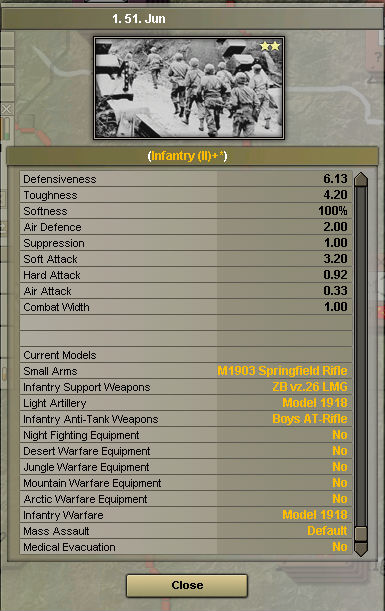
By November 1936, both our new airbase at Pingliang and the coastal fortress at Shanghai are completed and we begin construction of a second coastal fortress at Qingdao. At the same time, we have also built many new infantry divisions and given them much better equipment. They will no longer be forced to fight with sticks and stones. We will still be technologically behind the Japanese but our superior numbers should enable us to hold off their advance so long as we fight defensively.
As our research projects complete, we begin new ones, concentrating as usual on upgrading our infantry. After a great deal of debate, we also begin to experiment with Light Tanks. While the terrain of China is unsuited to fielding large numbers of heavy tanks, we sorely note the lack of mobile units in our Order of Battle. These can be used to quickly plug holes in our defense or exploit weaknesses in the enemy lines. Some Light Tanks, perhaps paired with Armored Car brigades, will serve well as a rapid reaction force to defend our port cities, especially since the coastal areas are flat. Still, it will be some time before we are able to build these.
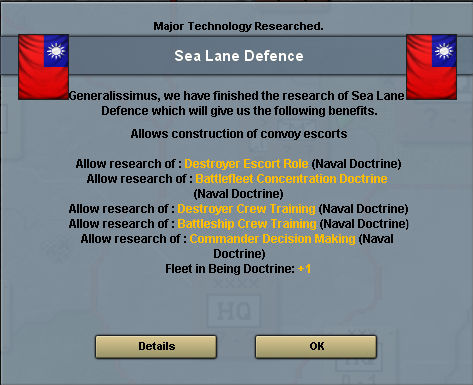
As 1936 draws to a close, we finally complete research on Sea Lane Defense and are in a position to construct escorts for our convoys. Our shipyards however report that the earliest escort units may only delivered in August 1937. As we expect the Japanese to declare war before this, we therefore face a crisis. We must either be prepared to see many of our transports being sunk by Japanese warships and race to rebuild them or to try to run our industry from our stockpiles of raw resources alone while we build up a sufficiently strong force of escorts. Either way, we face the possibility that our industry may need to operate at reduced output for many months. This is a difficult and painful decision.
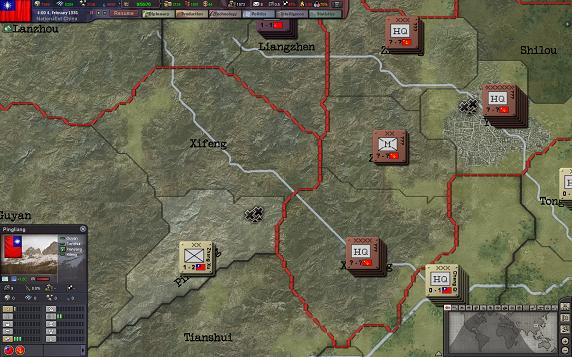
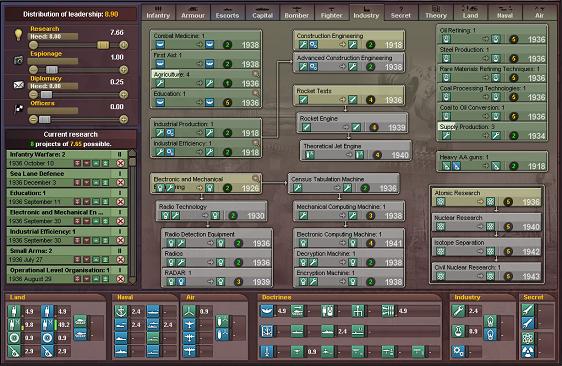
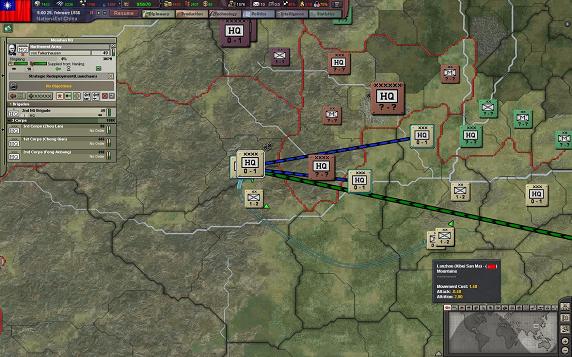
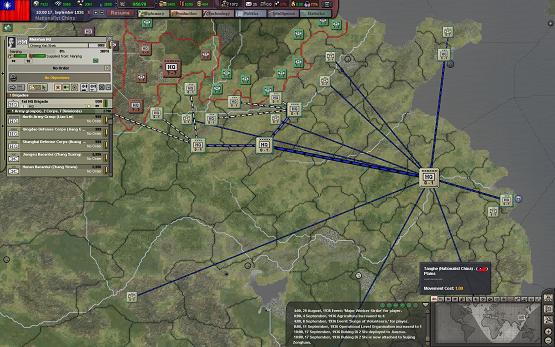
Leave a Reply